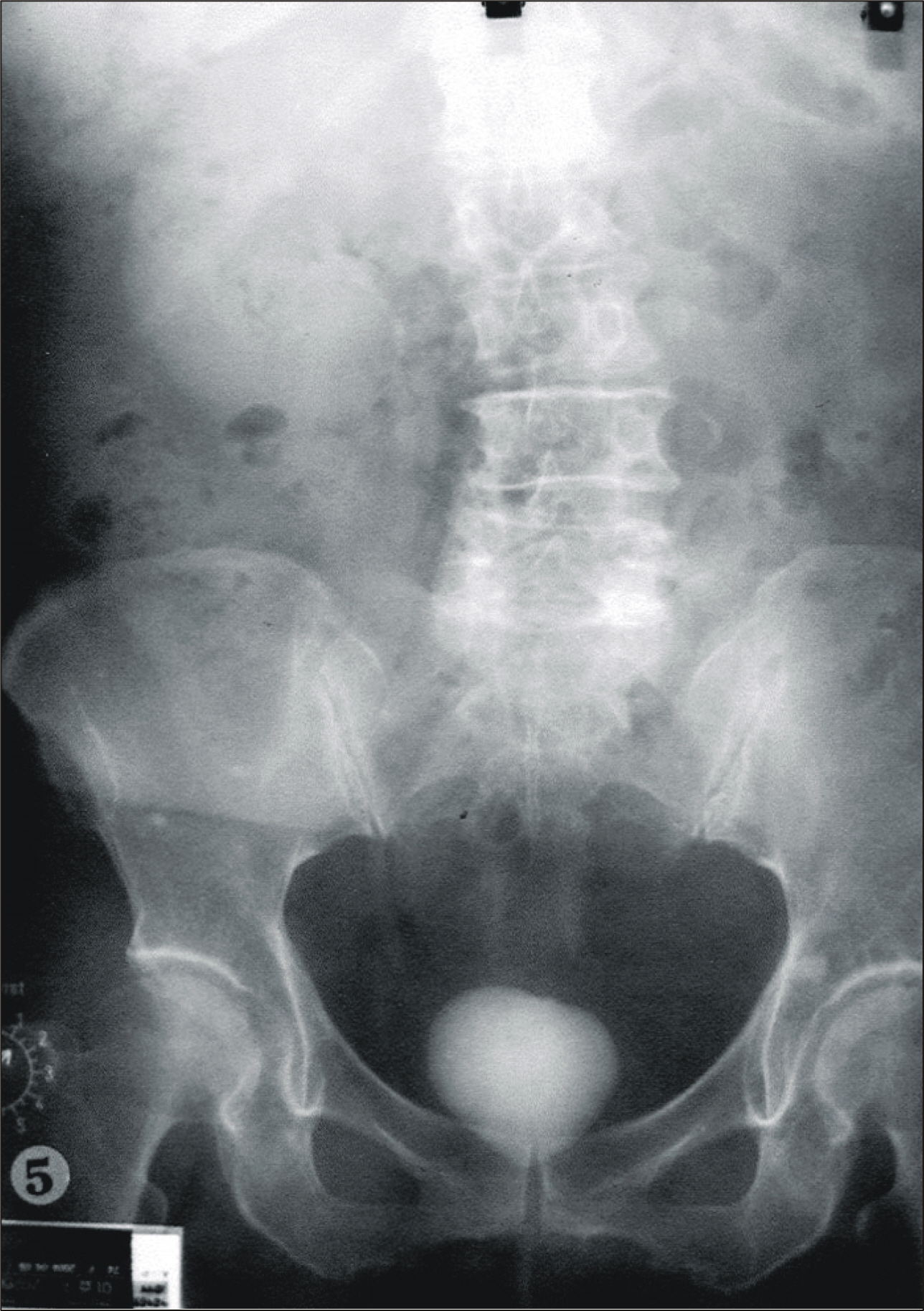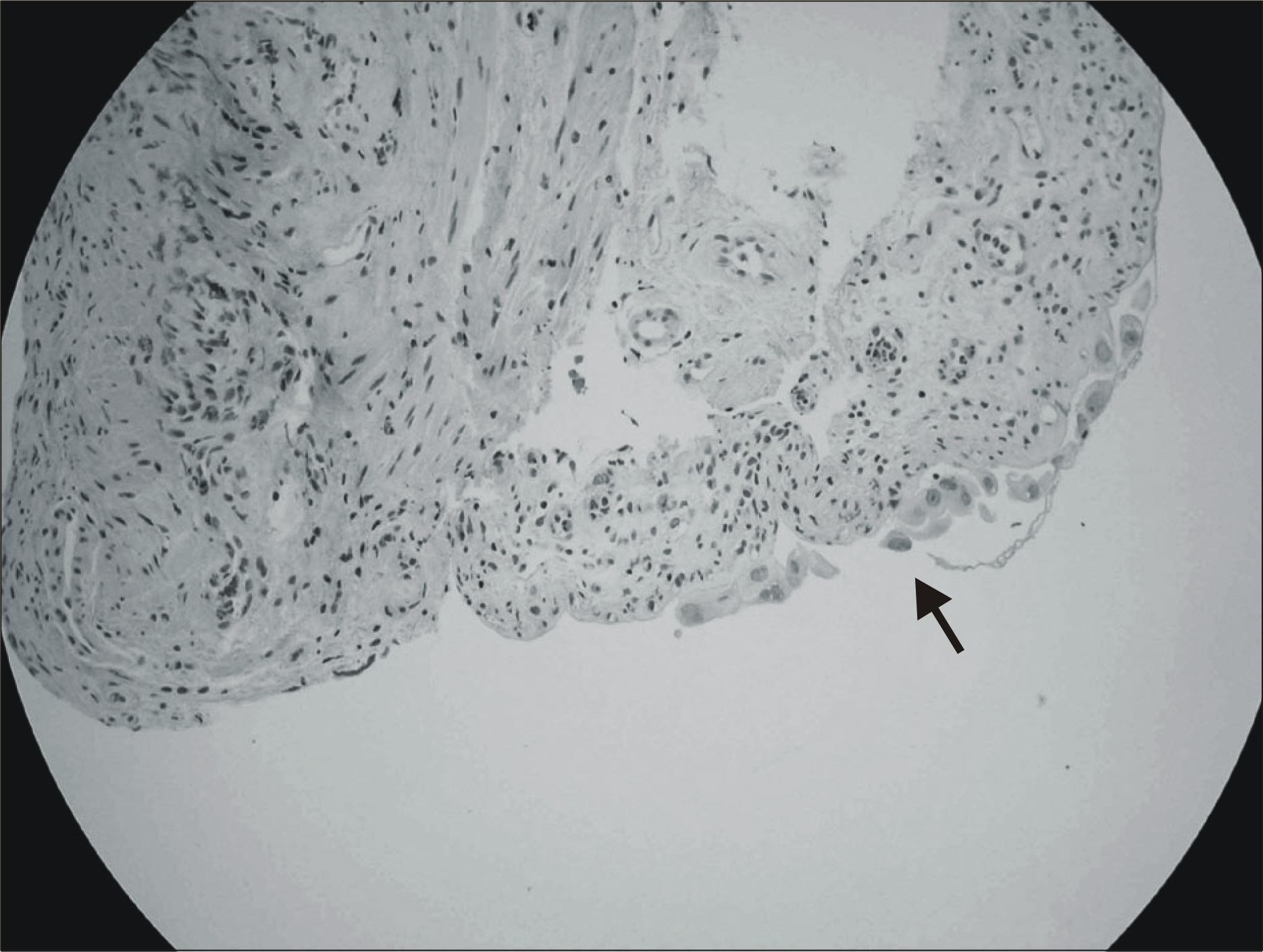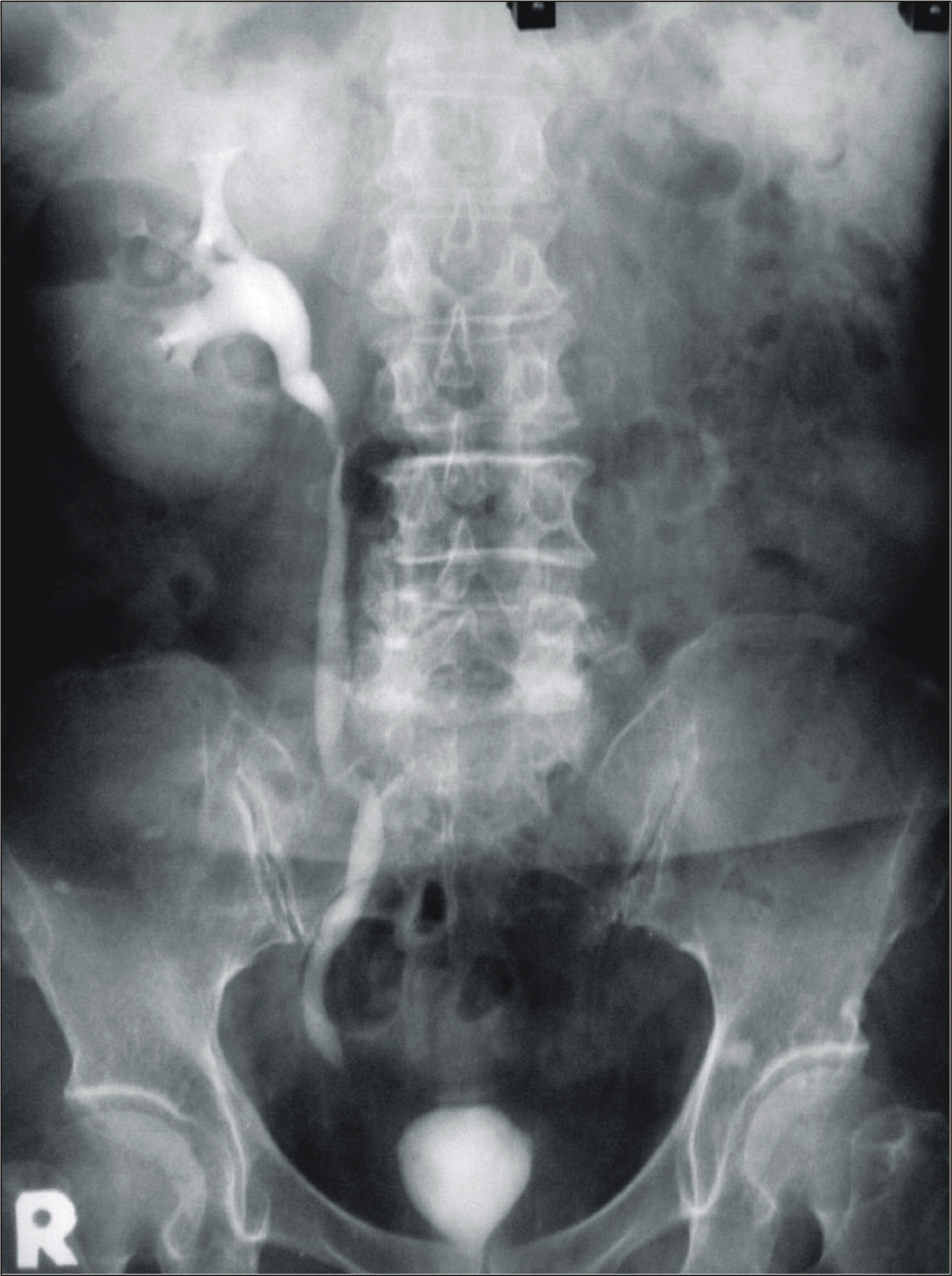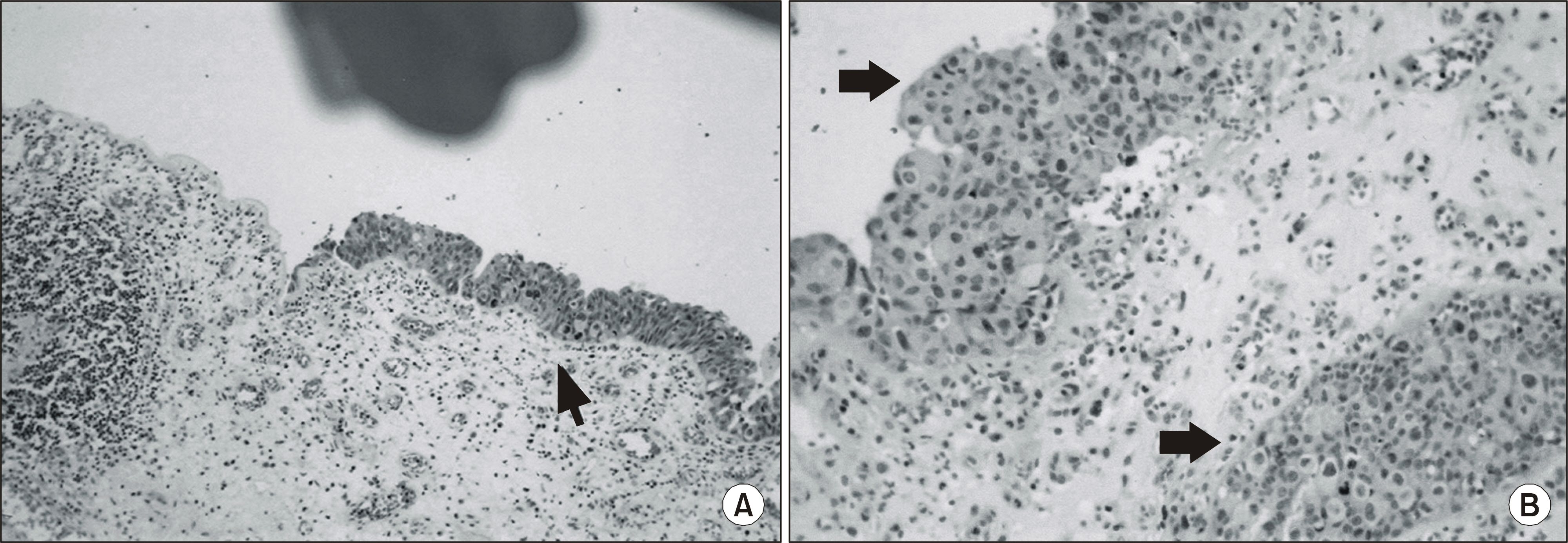Korean J Urol.
2006 Jan;47(1):101-104. 10.4111/kju.2006.47.1.101.
Bladder Transitional Cell Carcinoma Masquerading as Tuberculous Contracted Bladder
- Affiliations
-
- 1Department of Urology, National Police Hospital, Seoul, Korea. msk0701@hanmail.net
- KMID: 2294224
- DOI: http://doi.org/10.4111/kju.2006.47.1.101
Abstract
- Bladder cancer is generally manifested with gross hematuria and this is the most common urinary tract neoplasm in Korea, but it is very rare to find it combined with a contracted bladder. A case of contracted bladder was suspected as being recurred urinary tuberculosis; because of her past history, the urine analysis and cystoscopic findings seemed to resemble the chronic inflammation associated with urinary tuberculosis, and the transurethral biopsy reported only chronic inflammation. Yet the final histopathologic report after cystectomy and urinary diversion revealed that there was no tuberculosis, but rather, there was bladder transitional cell carcinoma (TCC). Therefore, any contracted bladder found in an older age patient is considered to be a urinary TCC until proven otherwise. To the best of our knowledge, this is the first case of bladder TCC combined with contracted bladder.
Keyword
MeSH Terms
Figure
Reference
-
1.Lanmm DL., Griffith G., Pettit LL., Nseyo UO. Current perspectives on diagnosis and treatment of superficial bladder cancer. Urology. 1992. 39:301–8.
Article2.Takayama K., Kumazawa J., Minoda K. Bladder tumor occurring in the contracted bladder following urinary tract tuberculosis. Eur Urol. 1986. 12:448–50.3.Rodescu D., Abeles H., Zelefsky MN., Williams MH Jr. Accelerated growth of lung cancer in association widi rifampicin administration for tuberculosis. Lancet. 1981. 2:983.4.Park YW., Chung JH., Lee HM. A comparison of the availability of the urine thinprep test and urine cytology in the diagnosis of bladder cancer. Korean J Urol. 2003. 44:734–8.5.Kim NK., Kim DH. A clinical observation on urinary tract tuberculosis. Korean J Urol. 1982. 23:327–33.6.Lee YS. Clinical observation on the renal tuberculosis. Korean J Urol. 1979. 20:119–27.7.Feeney D., Quesada ET., Sirbasku DM., Kadmon D. Trasitional cell carcinoma in a tuberculosis kidney: case report and review of the literature. J Urol. 1994. 151:989–91.8.Cardini S., Smulevich E. Transitional carcinoma of the ureter and urinary tuberculosis. Minerva Urol Nefrol. 1997. 49:33–7.9.Kadono Y., Koizumi H. A case of transitional cell carcinoma of the bladder widi active urinary tract tuberculosis. Nippon Hinyokika Gakkai Zasshi. 2002. 93:58–61.10.Yamada Y., Takenaka A., Gotoh K., Yamanaka N. Augmentation ileocystoplasty and ileal ureter replacement for distal ureteral cancer in a patient with a contracted bladder. Int J Urol. 1999. 6:475–8.
Article
- Full Text Links
- Actions
-
Cited
- CITED
-
- Close
- Share
- Similar articles
-
- Papillary Transitional Cell Carcinoma of the Bladder: Report of a Case
- A Case of Primary Transitional Cell Carcinoma in Bladder Diverticulum
- Preputial Calculi Associated with Urethral Calculi, Bladder Calculi and Bladder Transitional Cell Carcinoma: A Case Report
- A Case of Micropapillary Transitional Cell Carcinoma of the Urinary Bladder
- Correlation between Histopathologic Grade, Stage, and Degree of EGFR Expression in Transitional Cell Carcinoma of the Urinary Bladder





